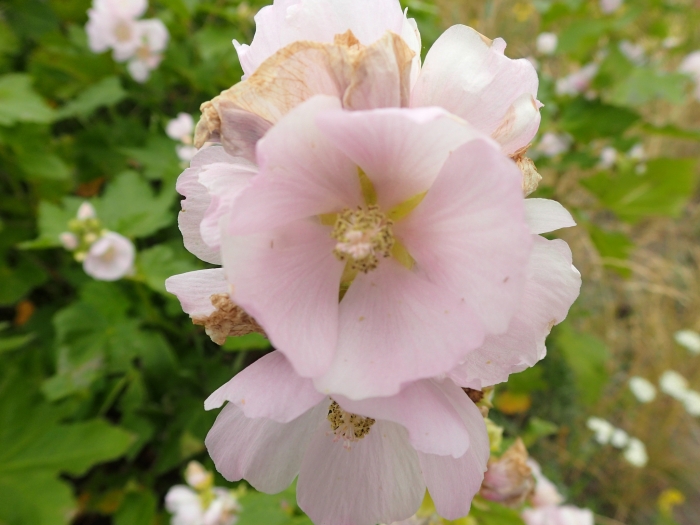Streambank Wild Hollyhock
(Iliamna rivularis)
Streambank Wild Hollyhock (Iliamna rivularis)
/
/

mfeaver
CC BY 4.0
Image By:
mfeaver
Recorded By:
Copyright:
CC BY 4.0
Copyright Notice:
Photo by: mfeaver | License Type: CC BY 4.0 | License URL: http://creativecommons.org/licenses/by/4.0/ | Rights Holder: mfeaver | Publisher: iNaturalist | Date Created: 2019-07-22T17:24:38-07:00 |






















































Estimated Native Range
Summary
Iliamna rivularis, commonly known as Streambank Wild Hollyhock, is a perennial herb native to the riparian zones, moist mountain valleys, and open woodlands of the western United States. It typically grows 3 to 6 feet tall from a woody caudex and produces dense racemes of soft lavender-pink flowers that bloom from June through August. The flowers are showy and attract pollinators. The plant has distinctive five to seven lobed, cordate leaves that add to its ornamental value. The seeds of Iliamna rivularis have a very hard coat, allowing them to remain viable in the soil for over 50 years, with germination often occurring after a disturbance such as a wildfire.
Streambank Wild Hollyhock is valued for its tall stature, attractive foliage, and long-lasting blooms, making it a suitable choice for native plant gardens, perennial borders, and restoration projects. It is also of interest for its ability to regenerate after wildfires, contributing to its resilience in the landscape. In cultivation, it prefers full sun to part shade and requires medium amounts of water, thriving in soils with medium drainage. While it is not commonly afflicted by diseases, it can be susceptible to rust. Gardeners should be aware that, due to its ability to remain dormant in the soil for decades, it may emerge unexpectedly in areas where it was previously grown.CC BY-SA 4.0
Streambank Wild Hollyhock is valued for its tall stature, attractive foliage, and long-lasting blooms, making it a suitable choice for native plant gardens, perennial borders, and restoration projects. It is also of interest for its ability to regenerate after wildfires, contributing to its resilience in the landscape. In cultivation, it prefers full sun to part shade and requires medium amounts of water, thriving in soils with medium drainage. While it is not commonly afflicted by diseases, it can be susceptible to rust. Gardeners should be aware that, due to its ability to remain dormant in the soil for decades, it may emerge unexpectedly in areas where it was previously grown.CC BY-SA 4.0
Plant Description
- Plant Type: Herb, Subshrub
- Height: 3-6 feet
- Width: 2-3 feet
- Growth Rate: Moderate
- Flower Color: White, Pink
- Flowering Season: Summer
- Leaf Retention: Deciduous
Growth Requirements
- Sun: Full Sun, Part Shade
- Water: Medium
- Drainage: Medium
Common Uses
Bee Garden, Bird Garden, Border Plant, Butterfly Garden, Low Maintenance, Showy Flowers
Natural Habitat
Native to riparian zones, moist mountain valleys, and open woodlands
Other Names
Common Names: Wild Hollyhock, Mountain Hollyhock, Streambank Globe-Mallow, Iliamne Des Ruisseaux
Scientific Names: , Iliamna rivularis, Sphaeralcea rivularis, Iliamna rivularis var. rivularis, Sphaeralcea acerifolia, Iliamna rivularis var. diversa, Sphaeralcea rivularis var. diversa, Iliamna acerifolia, Iliamna rivularis var. cismontana, Malva acerifolia
GBIF Accepted Name: Iliamna rivularis (Douglas ex Hook.) Greene